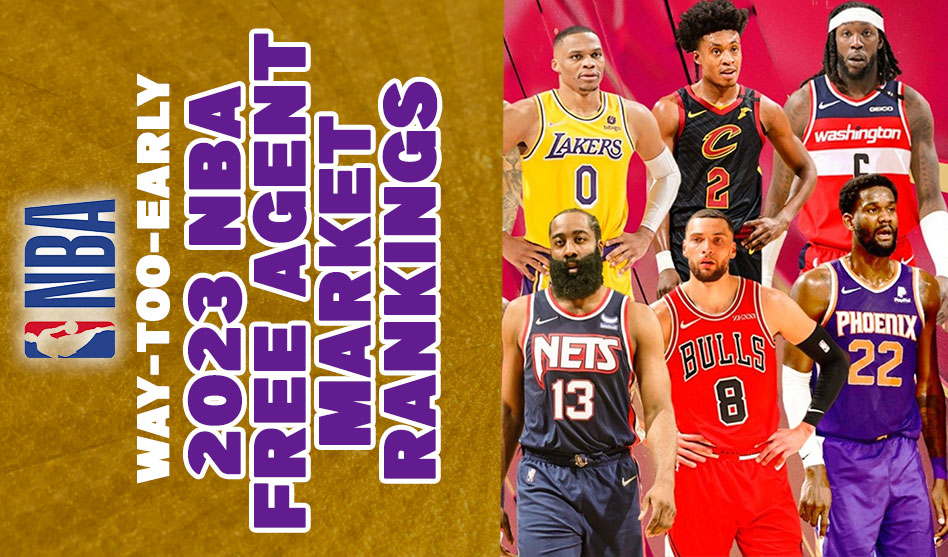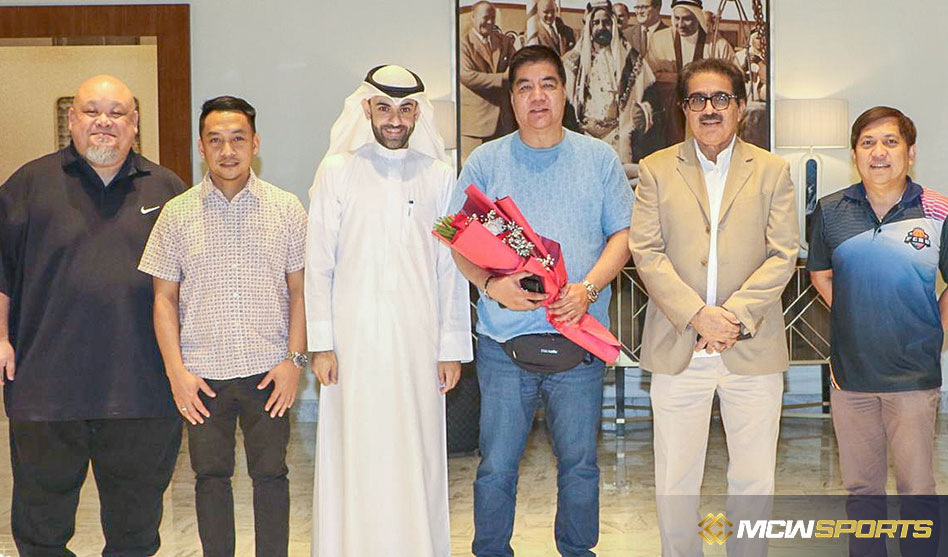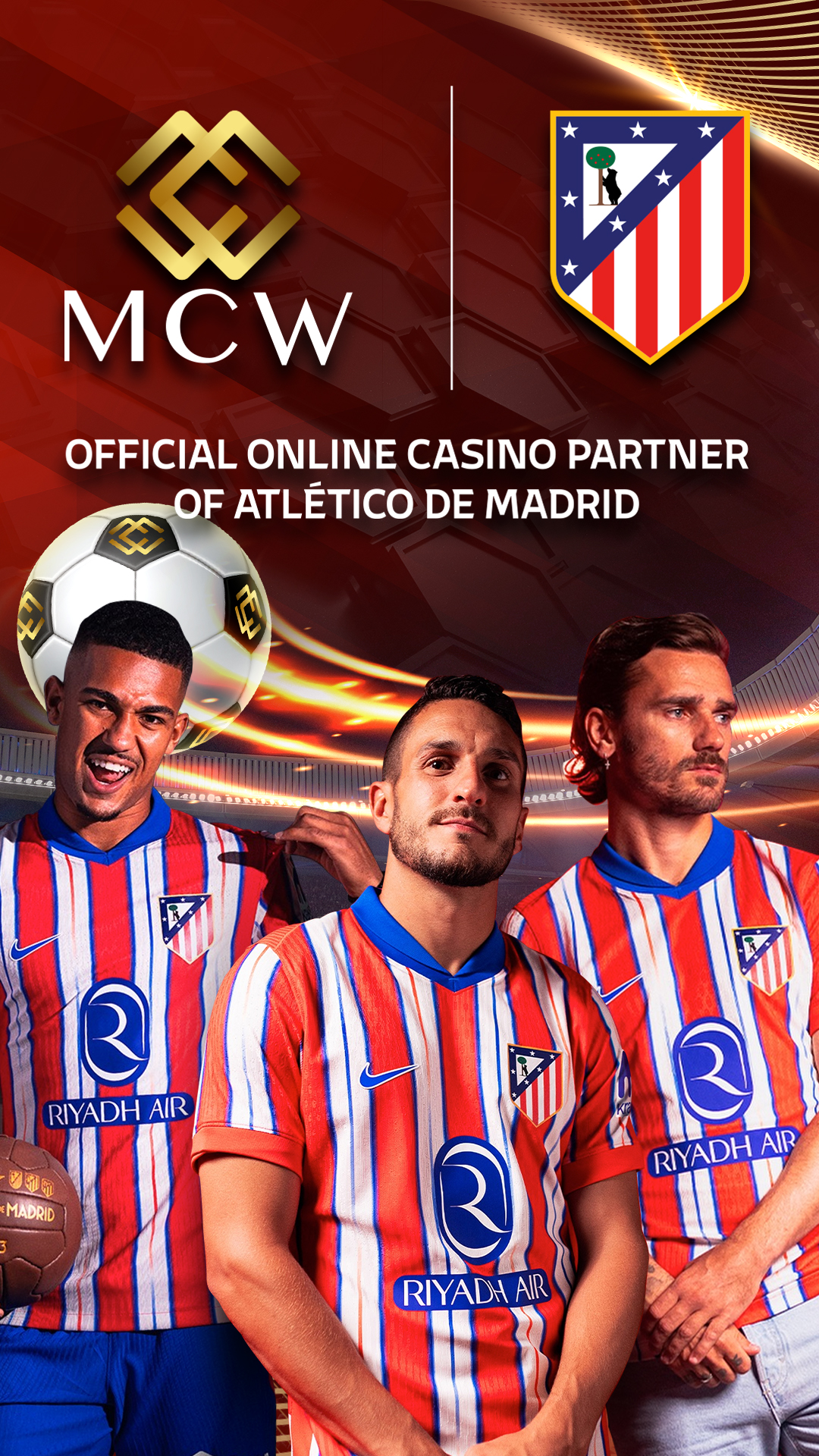We have not even wrapped up the NBA’s 2022 free-agency period, but it is never too early to peer into the future.
Next year’s class of free agents contains at least one superstar, plenty of intriguing restricted free agents and some serious depth.
Moreover, we will try to put the top 30 in order by where they will be following the 2022-23 campaign. That, of course, takes some prognostication.
Projection systems and past production can help guide an exercise like this, but predicting how someone will perform in the future requires a lot of subjectivity.
As an example of how this approach might affect a list like this, let us talk about RJ Barrett and Al Horford. Today, the latter is the better player. However, if we forecast enough of a rise for Barrett and something of a decline for Horford, it is conceivable that the younger forward could be in higher demand a year from now.
So, with the crystal ball firmly in hand, let us sort out that and more.
Players 30-26
30. Rui Hachimura (Restricted)
Lack of availability and ancillary contributions have been an issue for Rui Hachimura, but he averaged double figures and shot 44.7 percent from three in 2021-22.
That kind of shooting from a 6’8″ forward is intriguing by itself. Add some consistency and versatility on defense to that and his post-game, and Rui could rise higher than this by next summer.
29. Max Strus
Because he provides a similar level of outside shooting and off-ball movement, while being a bit more explosive, Max Strus leapfrogged Duncan Robinson in the Miami Heat’s rotation this season.
If he shows an ability to create a bit in a pinch this season, he will almost certainly get a solid payday.
28. Grant Williams (Restricted)
Grant Williams almost certainly forced his way onto more teams’ radars this postseason, when he averaged 8.6 points, shot 39.3 percent from three and ably defended some of the game’s best forwards.
The arrival of Danilo Gallinari may limit his playing time and role, but he still figures to be an important three-and-D forward off the bench.
27. PJ Washington (Restricted)
PJ Washington has quietly averaged double figures and hit at least 36.5 percent of his three-point attempts in each of his three NBA seasons. As a floor-spacer alone, he would be a valuable addition to plenty of teams.
However, there is some versatility to his game that should have teams interested. No player in league history played at least 1,000 minutes in a season and matched or exceeded all of his marks for rebounds (6.9), assists (3.0), threes (2.2), steals (1.2) and blocks (1.2) per 75 possessions.
26. Seth Curry
Seth Curry will be almost 33 years old next summer, but he figures to still be one of the game’s best high-volume floor-spacers.
With his off-ball movement and the third-best career three-point percentage in NBA history, he should be able to manipulate defenses for at least a few more years.
Players 25-21
25. Bojan Bogdanovic
Bojan Bogdanovic has been a steady floor-spacer over his three seasons with the Utah Jazz. He has averaged 18.4 points and 2.7 threes while shooting 39.7 percent from three.
He is 33 and clearly slowing down on defense, though. In addition, the contributions beyond scoring are, well, lacking.
Bogdanovic appears to be a long way from the end of his career, but he is definitely entering the specialist phase of it.
24. Josh Hart (Player Option)
It was only 13 games, but we saw a different version of Josh Hart following his trade to the Portland Trail Blazers last season.
Over that brief stretch, a more aggressive Hart averaged 19.9 points, 5.4 rebounds, 4.3 assists and 2.4 threes while shooting 37.3 percent from deep.
With Damian Lillard coming back and Jerami Grant joining the team, Hart isn’t likely to get as many shots, but he should still be able to show off his versatile defense and plus rebounding ability for a guard.
23. Keldon Johnson (Restricted)
It flew under the radar because of the San Antonio Spurs’ mediocre season, but 22-year-old Keldon Johnson is starting to look like a bona fide NBA starter.
Johnson averaged 17.0 points, 2.1 assists and 2.1 threes while shooting 39.8 percent from deep. And he’s not just a catch-and-shoot threat. Gregg Popovich allowed Johnson to dabble a bit in pick-and-roll ball handling, a skill that could separate him from more dedicated floor-spacers.
22. Russell Westbrook
Russell Westbrook just became the sixth player in league history to play at least 2,500 minutes and post a box plus/minus below minus-1.0 in an age-33 season.
Four of the players already on that list dipped even further below zero the next season. One (Reggie Theus) retired from the NBA after the campaign in question.
Westbrook still piles up basic numbers, but horrendous shot selection (and accuracy) and a high turnover rate probably are not going anywhere. Barring drastic changes, he is not bucking the trend detailed above.
21. Myles Turner
The reality of Myles Turner has never quite lived up to the promise, but he is still one of the more intriguing three-and-D options on the market in 2023.
He has averaged at least two blocks in five of the last six seasons. He just needs to hone in on the “three” part of that phrase. He hit 38.8 percent of his attempts from deep in 2018-19, but he is at just 33.8 percent since then.
Players 20-16
20. Jerami Grant
He won’t have the freedom to cast off like he did with the Detroit Pistons, but Jerami Grant will likely be the second option alongside Lillard in Portland. And that role may suit him better.
If his scoring winds up somewhere between the 12.0 he put up for the Denver Nuggets and the 20.9 he registered in Detroit and his defense returns to the form he had earlier in his career, plenty of teams will come calling in 2023.
19. Brandon Clarke (Restricted)
The presence of Jonas Valanciunas and Steven Adams has limited his playing time, but Brandon Clarke has quietly been one of the game’s most efficient bigs.
Over the course of his career, he’s tied for 30th in box plus/minus, with averages of 17.8 points, 9.1 rebounds, 2.4 assists, 1.5 blocks and 1.2 steals per 75 possessions.
18. Christian Wood
Christian Wood figures to benefit from a new teammate about as much as anyone who switched squads this offseason.
He’d already averaged 19.1 points and 1.9 threes while shooting 38.4 percent from deep over his last two seasons, and that was without playing alongside a playmaker like Luka Doncic.
With the kind of shots he has about to be spoon-fed at the three-point line or the rim, his efficiency should go up. And if the Dallas Mavericks build on last season’s success, he figures to be targeted by plenty of suitors next summer.
17. Gary Trent Jr. (Player Option)
He has a long way to go as a scorer inside the three-point line, but Gary Trent Jr. is starting to look like a prototypical three-and-D wing.
In 2021-22, no one matched or exceeded all three of his marks for three-point attempts (545), three-point percentage (38.3) and defensive box plus/minus (0.3).
16. Al Horford
Al Horford is 36 years old, but he is coming off the best and most important playoff run of his career.
He helped carry the Boston Celtics to the Finals, with averages of 12.0 points, 9.3 rebounds, 3.3 assists, 2.0 threes and 1.3 blocks. He also shot 48.0 percent from deep.
A decline is on the way at some point, but those wide-ranging contributions are as dependent on skill, experience and wit as they are on athleticism.
Players 15-11
15. Kevin Love
Like Al Horford, Kevin Love is certainly on the other side of his peak, but he should have a few years left as a positive impact player.
Love still possesses a unique combination of shooting, passing and rebounding ability (there have been six seasons of at least 10 rebounds, three threes and three assists per 75 possessions, four of which belong to Love). And in the right role, his struggles on defense can be mitigated.
14. Nikola Vucevic
Nikola Vucevic is not quite on Love’s level as a shooter, but plenty of his other skills are comparable. Plus he’s bigger, two years younger and more believable as a defensive anchor.
Over the last five seasons, Vuc is tied for 20th in the league in box plus/minus, with averages of 22.5 points, 12.6 rebounds, 4.1 assists, 1.8 threes, 1.1 steals and 1.1 blocks.
13. De’Andre Hunter (Restricted)
Among the 375 players with at least 500 minutes in 2021-22, De’Andre Hunter was tied for 354th in box plus/minus. A below-average true shooting percentage and way-too-low rebound and assist rates have a lot to do with that. The fact that he’ll be a little older (25) than most players coming off a rookie contract is concerning too.
However, you can still see the outline of a prototypical three-and-D wing when you watch Hunter. He is 6’8″, moves well side to side and shot 37.9 percent from deep this past season. If
new Atlanta Hawk Dejounte Murray’s on-ball defense allows Hunter to wreak a little more havoc in passing lanes, he should be able to drive his value up a bit.
12. Harrison Barnes
A good long-term outcome for Hunter might be turning into Harrison Barnes.
Barnes never became the superstar his high school recruiting rank suggested he’d be, but he now has a decade of experience, a double-digit career scoring average and an above-average three-point percentage.
While he probably won’t make any All-Defense teams (especially as he enters his 30s), he’s the kind of switchable forward you can trust against most 3s and 4s.
11. Kyle Kuzma (Player Option)
Kyle Kuzma’s scoring average rising to 17.1 in his first season with the Washington Wizards was encouraging, but it was what happened to his other numbers that really sent him up this list.
Kuzma posted career highs (by far) in rebounds (8.5), assists (3.5) and blocks (0.9) per game. His increased commitment to the more team-oriented aspects of basketball (like passing and defense) suggests he can be more than a heat-check-off-the-bench guy.
And he’ll still be under 27 when he hits free agency. Whatever team signs the next contract should get him for his prime.
10. Cameron Johnson (Restricted)
Among a strong corps of position less forwards on the Phoenix Suns, Mikal Bridges understandably got the bulk of the attention. His defense and transition scoring were very real weapons, but Cameron Johnson’s numbers and contributions were nearly as valuable.
By at least one metric, they were actually more valuable.
On a per-possession basis, Johnson scored more points, grabbed more rebounds and hit more threes than Bridges. He also had a higher three-point percentage. And among rotation players, he only trailed Chris Paul, Devin Booker and Deandre Ayton in box plus/minus.
All this is not to try to prove that Johnson is better or more valuable than Bridges. Context and roles matter, but there is plenty of evidence to suggest Johnson might be a little underrated as he heads into a contract year.
He is not an elite athlete, but he is 6’8″ and knows how to use that frame well. He has a quick release as a catch-and-shoot receiver.
For teams that already have plenty of established playmaking on the roster, he is a great option at forward.
9. D’Angelo Russell
D’Angelo Russell has become something of an online punching bag over the course of his career, and there are plenty of stretches that may justify that.
His general shot selection is not something to aspire to. Nor is his defense. But in 2021-22, he made subtle improvements in both areas, and his usually steady hand at the wheel helped the Minnesota Timberwolves get back to the playoffs.
On the year, the Wolves were plus 4.6 with Russell on the floor, compared to plus 1.5 when he was off.
And there were only nine players in the league who matched or exceeded both of his marks for points (18.1) and assists (7.1) per game. Add threes to those qualifiers, and the number drops to four.
Next season, with the best lob threat he has ever had (Rudy Gobert), we can probably expect his advanced numbers to tick up, just in time to sign his third NBA contract.
8. Kristaps Porzingis (Player Option)
Durability may be the most important factor in determining the value of Kristaps Porzingis’ next contract.
He’s only averaged 44.2 appearances per season since he was a rookie (a six-year stretch that includes a torn ACL), but if he declines his player option and enters the market, we can probably assume he exceeded that average.
And if he combines a little more availability with the kind of numbers he put up in a Washington Wizards uniform, he’ll have multiple suitors.
After he was traded by the Dallas Mavericks, KP put up 22.1 points, 8.8 rebounds, 2.9 assists, 1.7 threes and 1.5 blocks while shooting 36.7 percent from three.
Those outside shooting marks require a little more explanation in his case too.
Stathead’s Shot Finder tracks back to the start of the 1996-97 season. Over that stretch, Porzingis is 14th in total makes from 28 feet and out (above the break, the NBA three-point line is 23 feet, nine inches from the hoop). The only big ahead of Porzingis on that list is fellow Latvian Davis Bertans.
That kind of range is good from any player, but it’s unique for a center. If opposing big men have to chase a matchup four feet behind the three-point line, the paint has the potential to be wide-open.
7. Jordan Poole (Restricted)
Jordan Poole’s value skyrocketed this season.
Beyond his career highs in points (18.5), assists (4.0), threes (2.8), three-point percentage (36.4) and free-throw percentage (a league-leading 92.5), Poole showed lead guard potential when Stephen Curry was out or off the floor.
Over the course of the season, Poole averaged 25.9 points, 6.0 assists and 3.9 threes per 75 possessions with a 58.3 true shooting percentage when Curry was not in the game.
It is dangerous to assume he would maintain that kind of production on his own team, but it is also silly to put a cap on the potential of a 23-year-old who has already won a championship and made the improvements he has.
If his trajectory continues like this through 2022-23, he will be among the most coveted guards available.
6. Tyler Herro (Restricted)
You could probably flip a coin on the order with Jordan Poole and Tyler Herro and make a reasonable argument to have either higher on this list.
Their 2021-22 numbers were strikingly similar. Herro scored a bit more (both per game and per 75 possessions). Poole had a barely higher assist percentage. Herro had a better three-point percentage. Poole was better inside the arc. Herro is half a year younger. Poole’s wingspan is 3.5 inches longer.
We are giving Herro the slightest of nods here for a couple of reasons. First, the age already referenced. Second, Herro should have a little more opportunity to boost his value in 2022-23.
Poole is still playing behind Curry and a presumably less rusty Klay Thompson. That is one of the greatest backcourts of all time, and it will be defending another championship.
Herro’s path to more minutes and shots is obstructed by 36-year-old Kyle Lowry and the combination of Duncan Robinson and Max Strus. All three are solid players, but it’s undeniably easier to see Herro being the best guard on his team than it is for Poole.
If Herro can recreate what he did as a scorer in 2021-22 (when he averaged 20.7 points) while adding a bit more passing and playing more committed defense, he’ll be in for a big payday.
5. RJ Barrett (Restricted)
We’ll get this out of the way at the outset: Whether you’re talking about 2021-22 or their entire careers, RJ Barrett’s numbers clearly come up short against those of Jordan Poole and Tyler Herro.
He is a less efficient scorer and a less willing passer. And he hasn’t really separated himself from either one as a defender (at least not statistically).
Barrett still cracks the top five over the two guards for one big reason: the size and positional difference.
He is only an inch taller than Herro, but his wingspan is three inches longer than Poole’s. He is a solid lateral athlete too, so it’s easier to see him developing into a switchable, plus defender. And that kind of player is in high demand right now.
The Boston Celtics just had a run to the NBA Finals with Jayson Tatum and Jaylen Brown inhabiting that archetype about as well as anyone. And while this isn’t necessarily a suggestion that Barrett will turn into Tatum, it’s fair to think Barrett can reasonably aspire to that.
It is impossible to give a definitive calculation on a player’s long-term potential, but there are certainly some indicators that Barrett has a bit more than other restricted free agents in this class.
4. Kyrie Irving
There is no question that signing Kyrie Irving in 2023 will take an organizational leap of faith.
Even in the age of player empowerment, trade demands and long-term contracts meaning far less than they used to, Kyrie might be the biggest wild card.
Chemistry calamity has followed him from Cleveland to Boston to Brooklyn, and any team taking on his next contract will have to worry about that.
As a pure talent play, though, some team (or teams) will talk itself into Irving, especially if being on a contract year motivates a little more availability in 2022-23.
He has only averaged 34.3 appearances per season with the Nets, but he has put up 27.1 points, 6.0 assists and 3.0 threes while shooting 40.6 percent from three.
When active, he is still one of the game’s most dynamic volume scorers. And with a wide array of ball-handling skills and finishing moves inside, he has a game that has cultivated a loyal group of fans that will follow him anywhere.
3. Andrew Wiggins
What a difference a change of scenery has made for Andrew Wiggins.
He’s averaging fewer points (18.0) as a Warrior than he did as a Timberwolf (19.7), but his shot selection has improved dramatically, his three-point percentage has soared from 33.2 to 38.4 and his defense is now game-changing.
Throughout a Golden State playoff run that ended in a championship, Wiggins was the primary defender against the opposition’s best perimeter threat. He was the primary reason Tatum shot 36.7 percent from the field in the Finals.
During that same series, the Warriors were plus-7.1 points per 100 possessions with Wiggins on the floor and minus-1.7 when he was off.
If he has another season in which he shows off that kind of defense and continues to hit threes at an above-average clip, he will bring a lot of value to the market in 2023.
As the game trends more toward position less basketball and playmaking wings and forwards, those who can defend that kind of player will be in high demand.
2. Khris Middleton (Player Option)
Much of what was said about Andrew Wiggins also applies to Khris Middleton, just to a greater degree (and for a longer period).
Over the last five years, Middleton has averaged 19.9 points and 2.2 threes while shooting 38.6 percent from three.
He has also been one of the game’s best mid-range shooters over that span. Among players with at least 1,000 two-point attempts from 10 feet and out, Middleton’s field-goal percentage is fifth (behind only Chris Paul, Kevin Durant, Kyrie Irving and CJ McCollum).
What really sets him apart from Wiggins, though, is his ability to create shots for others (and willingness to find and pass to the open man).
Middleton has averaged over five assists in each of his last two seasons. And defenses knowing they have to honor his passing ability have given him a little extra space on his own attempts.
1. LeBron James
He will be 38.5 years old next summer, but if LeBron James is a free agent, he is likely to be the most sought.
A decline surely has to come at some point, but his age-37 campaign in 2021-22 suggests it is still a few years away.
He just posted an all-time high box plus/minus for a player his age (or older). His 30.3 points are well clear of second-place Kareem Abdul-Jabbar’s 23.4 on that list.
And even if his athleticism starts to slip a bit, it’s not hard to imagine him stretching out his effectiveness by leaning a bit more on his playmaking and post-game.
Barring a Peyton Manning-like collapse (whose passer rating went from 101.5 in his second-to-last season to 67.9 in his Super Bowl-winning final campaign), LeBron is almost certainly the top potential free agent for 2023.

 English
English










